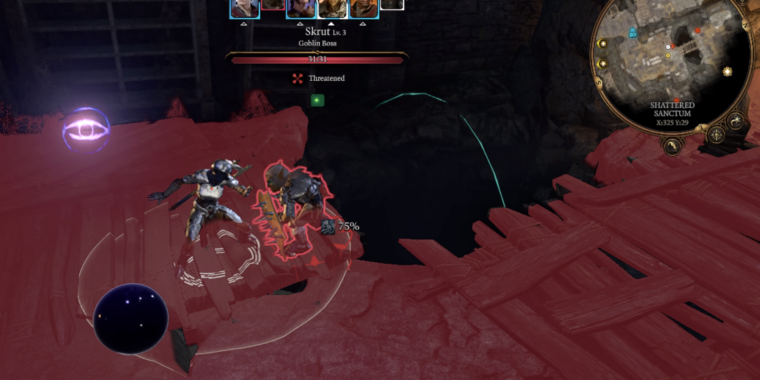Quake II’s remastered edition trailer
In a surprise announcement at QuakeCon, publisher Bethesda Softworks announced the immediate availability of a light remaster of the classic first-person shooter Quake II, similar to the one for the first Quake that was released not that long ago.
It’s available now on Windows, Xbox One, Xbox Series X|S, Nintendo Switch, PlayStation 4, and PlayStation 5.
As Bethesda is now a subsidiary of Microsoft, the remastered version of Quake II is part of Microsoft’s Game Pass subscription service on Xbox and PC. Further, those who already owned the previous version of Quake II on Steam, GOG, or Microsoft’s store will get the new version as a free update.
The game sells for $9.99 on each platform if you’re not a Game Pass subscriber or haven’t bought it before. This marks the first time it has been available at all on any of the console platforms.
You get a lot of content for 10 bucks; the package includes the game’s original campaign, both previously released expansions, Quake II 64, and a new campaign called Call of the Machine with 28 levels developed by Machine Games (the team behind the recent Wolfenstein games).
There’s also split-screen local multiplayer (up to four players), as well as LAN and online multiplayer.
There are several additional tweaks and enhancements, but it’s not a total overhaul or a ground-up remake by any stretch. Most of the assets are the same, but the game now supports 4K, cloud saves, and cross-platform play, among other modern standards.
-
There are a bunch of video feature toggles, like a CRT filter, motion blur, and so on.
Samuel Axon -
The basics are there as well.
Samuel Axon -
More video settings.
-
There are also several modern accessibility settings in the menus.
Samuel Axon
An RTX version of Quake II was released on Steam a couple of years ago, but I tried it, and it does not seem to work with this new enhanced edition, which is a bit of a bummer.
First impressions
I took it for a spin this afternoon, playing the first few campaign missions and a couple of online deathmatches on PC.
It adhered tightly to 60 fps at max settings and 4K on my PC gaming rig (AMD Ryzen 9 5900X, Nvidia GeForce RTX 3080, 32GB of RAM). Since my desktop monitors are only 60 Hz, I briefly played it on the same system connected to my LG C1 TV and found that it didn’t have any problem maintaining 120 fps at that resolution either. It looks great in 4K, even though the assets are clearly from another era.
Bethesda included some extra bells and whistles, like an optional CRT filter. While I usually like using a CRT filter with retro games on an OLED, I turned this one off quickly as it was far too aggressive; it seemed to be almost like an over-the-top parody of a CRT filter rather than something attempting to accurately represent that late 1990s look.
The game obviously plays well on the keyboard and mouse, but I tried it with an Xbox Series controller and found the gamepad control scheme well-thought-out with good execution.
As for gameplay, I’ll admit that I didn’t play Quake 2 much back in the day, so I won’t be able to give the superfan’s perspective; I didn’t buy it until a year or two after it came out, and by that time I had become more of an Unreal guy. But I played enough both then and now to know nothing at all has changed on the gameplay front, and that’s a good thing because it’s a very tight first-person shooter.
-
The campaign is as fast and furious as ever.
Samuel Axon -
Multiplayer’s network performance seemed inconsistent in my time with it, but this was one of the matches that worked well.
Samuel Axon -
The server browser is a throwback to the old ways.
Samuel Axon -
Bethesda has added achievements to the game.
Samuel Axon -
There are also concept art and other goodies that you can browse in the menus.
Samuel Axon
I had a little trouble finding lag-free online multiplayer matches; some were unplayable, even though the ping in the server list was fine. Others worked perfectly, though. It was hit-or-miss, but then again, it was the same situation back in the old days.
There are some extras like achievements, concept art, and so on, but there’s no big progression system metagame to tie all your multiplayer matches together like you see in modern online shooters. That’s probably for the best, in my view—I played shooters for years without that sort of thing and enjoyed them just fine, so I’ve been mostly baffled by the hostile responses in recent years to games like Halo Infinite over relatively slim features on that front—but younger players might feel something is missing.
All told, it seems like a solid remaster that does just enough to make the game accessible on modern machines, but it doesn’t try to make it into a modern AAA game. If Bethesda had charged more, that might have seemed like the bare minimum, but for $9.99 (or free for Game Pass subscribers or people who previously bought the game), it’s hard to complain. I wish the ray-tracing features from the RTX release had made it to this version, though.
Listing image by Samuel Axon








